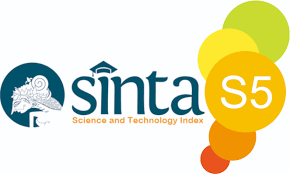THE IMPACT OF COOPERATIVE LEARNING MODEL TYPE THINK PAIR SHARE (TPS) ON THE HYDRAULIC BINDING MATERIAL TOWARDS THE STUDENTS’ LEARNING RESULTS AT CLASS X TECHNIC OF STONE AND CONCRETE CONSTRUCTION SMKN-1 PALANGKA RAYA SCHOOL YEAR 2014/2015
Keywords:
Think pair share, learning resultAbstract
Based on the researcher’s observation at Teacher Training Program and the interview with the teacher of Class X Technic of Stone and Concrete Construction SMKN-1 Palangka Raya, gained the data that the process of learning especially the hydraulic binding material, the teacher mostly applied direct learning method. This made the learning less effective, because the students didn’t really give some responses to the lesson, the students weren’t active in the teaching learning activity, and the students’ learning results were inadequate, less than 75. The type of research applied was experimental research, with all the population of students at the Class X Technic of Stone and Concrete Construction SMKN-1 Palangka Raya School Year 2014/2015, that was totally 24 students. This research used total sample technique, so all the students at the Class X Technic of Stone and Concrete Construction which was totally 24 persons divided into two groups, that was experiment class and control class. Therefore, the total students at the experiment class was 12 persons and at the control class was 12 persons. The research instrument was a test of learning result with 30 multiple choice questions which were firstly tested at a Class X TGB SMKN 1 Palangka Raya. Based on the analysis of validity test obtained 23 questions which were valid and the reliability coefficient was r11 = 0,88, so it could be concluded that the instrument had a very high reliability. According to a pretest data analysis, the mean of the experiment group was 69,50 and the mean of the control group was 66,17. The normality test result of the experiment group was X2 hitung = 2,8515 < X2tabel = 5,99 and the control group was X2hitung = 5,0707 < X2tabel = 5,99, so the pretest data of the experiment group and the control group normally distributed. The test result of homogeneity pretest data was F hitung = 1,74 < Ftabel = 4,46, so it was a homogeneous pretest data. Therefore, there was no difference between the initial ability of students at the experiment class than the control group. Based on the analysis of posttest data, the mean of the experiment group was 91,25 and the mean of the control group was 68,67. The normality test result of the experiment group was X2hitung = 1,5168 < X2tabel = 5,99, and the control group X2hitung = 2,3239 < X2tabel = 5,99, so posttest data of the experiment group and the control group normally distributed. The test result of the homogeneity posttest data was Fhitung = 1,09 <Ftabel = 4,46, so the posttest data was homogeneous. The analysis result with the test t was thitung = 9,1972 and ttabel = 2,074 because thitung > ttabel so H0 was rejected and Ha was accepted. Consequently, the learning result of the experiment group were better than the control group. Therefore, it might be concluded that there was a difference between the learning result of the students who applied the cooperative learning model type think pair share than the others who applied the direct learning model on the hydraulic binding material at Class X Technic of Stone and Concrete Construction SMKN-1 Palangka Raya School Year 2014/2015.
Downloads
Downloads
Published
Issue
Section
License
Copyright (c) 2015 PARENTAS: Jurnal Mahasiswa Pendidikan Teknologi dan Kejuruan

This work is licensed under a Creative Commons Attribution-NonCommercial 4.0 International License.


















